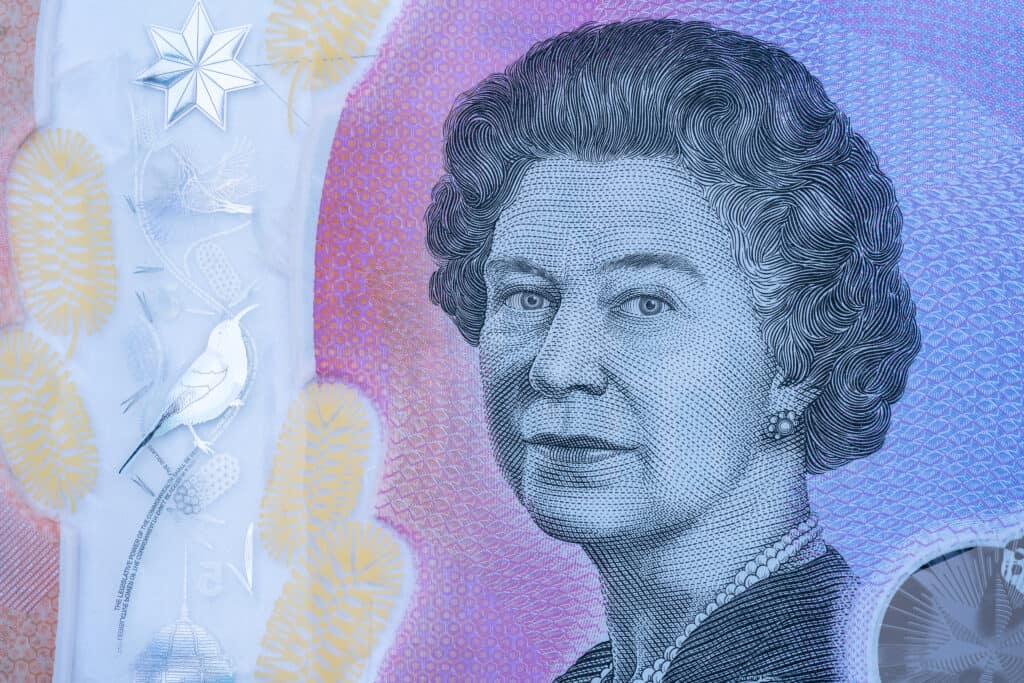At one point the British were ruling over a third of the world from Africa, to the Americas, to Australia, and China. They eventually pulled back but some countries still remain within that empire known as the Commonwealth Realm today, including Australia.
Queen Elizabeth II is Queen of Australia and its constitutional monarch. Within this role, she acts more in a ceremonial capacity and leaves all decision making for the country up to the Prime Minister and the Australian parliament. On top of Australia, there are sixteen countries that make up the Commonwealth Realm where Elizabeth II is Queen.

You can read more below about Queen Elizabeth II’s role as Queen of Australia, the other countries where she is Queen, and how the government works in these countries.
Queen Elizabeth II In Australia
Australia is considered a federal parliamentary constitutional monarchy. Queen Elizabeth II is considered to be the Head of State, however, she is represented by the Governor-General within the government of the country.
In this sense, it is the Governor-General of Australia that actually has control over the country. The Governor-General is chosen to represent the Queen and is chosen on the recommendation of the Prime Minister of Australia.
The current Governor-General of Australia is General David Hurley who was appointed the role in 2019. Before becoming the Governor-General, Hurley was in the Australian Defence Force and had the highest rank possible as Chief of the Defence Force before he retired.
There has actually been a lot of controversy over whether the Queen or the Governor-General is considered to be the Head of State in Australia. This controversy mainly began when the country wanted to become a republic in 1999.
Many mainstream media outlets argued that the Governor-General would become the Head of State when Australia became a republic. However, the Queen made a speech to the UN where she reasserted that she was indeed the head of state and that the Governor-General was just her representative.
According to the constitution of Australia, the Governor-General has the power or duty to perform the Crown’s functions in the legislature and executive government. Section 5 of Australia’s Constitution even states that the Governor-General holds the power to appoint times to hold parliament sessions, prorogue government, and even dissolve the House of Representatives.
That is actually an insane amount of power for someone who is just representing the Queen. Further to this, the Australian Constitution actually specifies that it is the Governor-General and not the Queen herself who holds this power.
What Other Countries Does Queen Elizabeth II Head?
Queen Elizabeth II isn’t only the Queen of Britain and the Queen of Australia, she is also the Head of State or Monarch of fourteen other countries. Her level of power varies depending on the country too.
On top of the United Kingdom and Australia, Her Majesty is the monarch of Antigua and Barbuda, The Bahamas, Barbados, Belize, Canada, Grenada, Jamaica, New Zealand, Papua New Guinea, Saint Kitts and Nevis, Saint Lucia, Saint Vincent and the Grenadines, Solomon Islands, and Tuvalu.
Watch the below video from J.J. McCullough where he explains the Queen’s role within the Commonwealth Realm.
Similar to Australia, many of these countries do not actually refer to the Queen as their Head of State within their constitutions. Countries like Barbados, Belize, Grenada, Jamaica, and even the UK itself do not refer to a Head of State in their constitution.
New Zealand, Papua New Guinea, Solomon Islands, and Tuvalu all refer to Her Majesty as the Head of State in their constitutions.
The Government in Other Commonwealth Realm Countries
Every single one of the countries within the Commonwealth Realm is considered to be a parliamentary democracy and constitutional monarchy. Most of these countries follow what is referred to as a Westminster-style parliamentary system.
This means that the federal government is led by the elected Prime Minister who then leads their party’s seats within the House of Commons, which is full of elected officials from around the country. The Prime Minister will select different elected officials to have roles as other Minister’s which makes up the “Cabinet.”
Then the Prime Minister will refer their suggestion for the Governor-General to the Queen and if she approves, that person will take the role. It can be kind of a confusing process, especially if you come from a country like the United States where the government is a democratic republic.